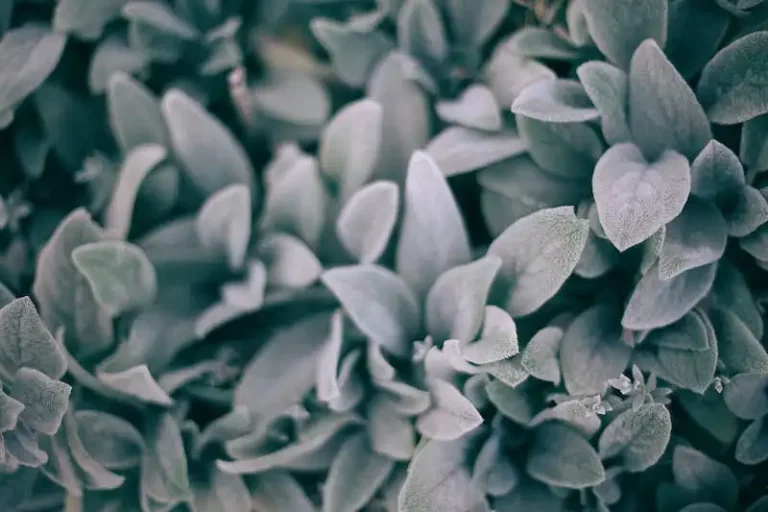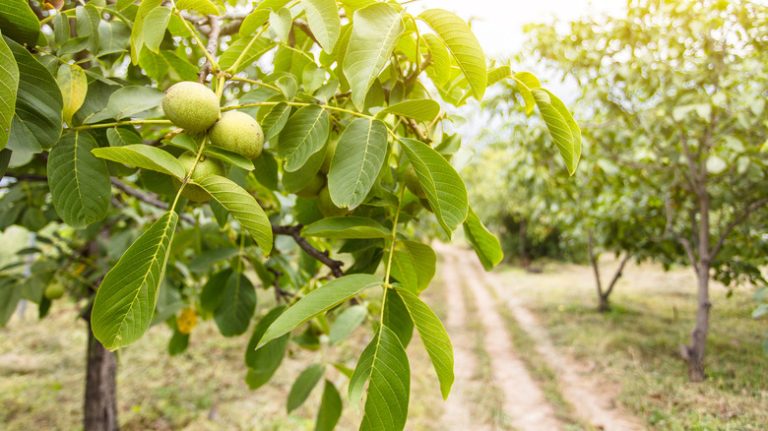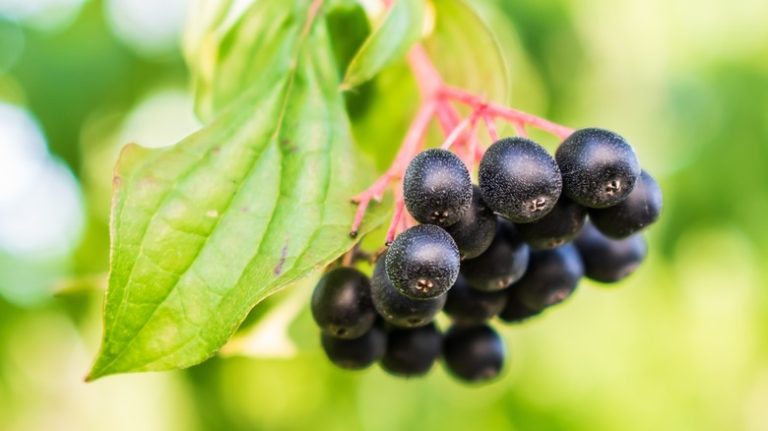Cephalanthus occidentalis, commonly known as buttonbush, is a versatile native shrub found in various types of natural areas throughout North America. Its unique appearance, attractive leaves, and showy pom-pom-like flowers make it a popular choice for gardeners looking for an alternative to traditional shrubs.
The leaves of Cephalanthus occidentalis are ovate and green, providing a refreshing and vibrant look to any garden or landscape. In the spring, the shrub produces tubular and fragrant flowers that bloom for hours, attracting butterflies, bees, and other pollinators. Its unique shape and button-like fruits add to its aesthetic appeal.
Aside from its ornamental value, Cephalanthus occidentalis provides numerous ecological benefits. The plant is a valuable source of nectar and food for pollinators, and its fruits can be consumed by birds and other wildlife. Additionally, the shrub’s dense growth and woody base serve as natural habitat and provide cover for various species. This makes it an excellent choice for conservation purposes and promoting biodiversity.
Caring for Cephalanthus occidentalis is relatively easy. The shrub is adaptable to different soil types, but it thrives in moist areas. Regular watering is recommended, especially during dry periods. Overwintering this plant is not a problem, as it is hardy and can withstand colder temperatures.
Whether planted in a garden or used as a potted shrub, Cephalanthus occidentalis is a versatile and attractive addition to any landscape. Its visual appeal, ecological benefits, and low maintenance make it an awesome choice for homeowners and landowners alike.
Buttonbush Buttonbush
The Buttonbush (Cephalanthus occidentalis) belongs to the Rubiaceae family and is an ecologically significant plant providing various benefits. It is a popular choice for landscaping due to its attractive foliage and unique button-like flowerheads.
Buttonbush is a versatile plant that can thrive in different types of environments. It is suitable for both full sun and partial shade, and it can tolerate a wide range of temperature conditions. It is commonly found in wetlands and along shorelines, but it can also be grown in a home garden or potting containers.
Buttonbush flowers are small and spherical, arranged in dense clusters. The flowerheads are usually white and can attract a wide variety of pollinators, especially bees, butterflies, and moth species. The blooms are long-lasting, providing visual interest throughout the summer months.
Buttonbush is a great plant for waterfowl and other aquatic creatures as it provides shelter and food. The plant’s seeds and foliage are a source of nutrition for various bird species, while the flowers attract insects that serve as a food source for birds and other animals.
In terms of ecological benefits, Buttonbush plays an important role in water conservation and pollution control. Its root system helps prevent erosion and its dense foliage can help filter pollutants from runoff water. This makes it a suitable choice for riparian areas and wetland restoration projects.
Buttonbush is a low-maintenance plant, requiring minimal pruning or fertilization. It is resistant to most diseases and pests, making it a hassle-free option for gardeners. It is important to keep the plant well-hydrated, especially during hot summer days, to prevent wilting.
In terms of propagation, Buttonbush can be easily grown from cuttings or seeds. For cuttings, select healthy stems and remove the lower leaves. Plant the cuttings in a well-draining soil mix and keep them moist until roots develop. From seeds, collect mature seed pods and place them in a container with water, allowing them to ferment for a few days. After fermentation, separate the seeds from the pulp and plant them in a suitable growing medium.
| Types | Exposure | Temperature |
|---|---|---|
| 1. Arizona | Full sun | Hot |
| 2. Bog gardens | Partial shade | Cool to warm |
Buttonbush is a popular choice for landscaping due to its unique appearance and ecological value. Its spherical flowerheads and spiky foliage add visual interest to any garden or natural area. Whether used as a standalone specimen or grouped together, Buttonbush can create a lush and vibrant landscape.
Overall, Buttonbush is a versatile plant that provides numerous benefits. It is an attractive addition to any garden, suitable for various environmental conditions and easy to care for. Its ecological significance makes it a great choice for conservation projects and its unique appearance adds beauty to landscapes.
Cephalanthus occidentalis
Cephalanthus occidentalis, commonly known as the buttonbush, is a woody shrub found in bogs and wetlands. It is native to North America, including areas like North Carolina. The species is also known as the riverbush, honey-bells, or common buttonbush.
The buttonbush grows to a mature height of 6-12 feet and has ovate, elliptical leaves. The plant blooms in early to mid-summer, producing spherical flower heads made up of many small tubular florets. The flowers are white with reddish-brown anthers, and their arrangement gives the plant a unique and eye-catching look.
The buttonbush’s flowers attract a variety of insects, including sphinx moths, which are the primary pollinators. The plant’s name “buttonbush” refers to the round fruits it produces, which resemble small buttons. These fruits are loved by many birds, including waterfowl, which dine on them throughout the year.
The buttonbush is hardy and adapts well to a variety of growing conditions. It prefers moist soils and can tolerate both full sun and partial shade. This plant is a great option for gardens and landscaping near water features, as it attracts birds and adds a touch of green to the surroundings.
Cultivars of Cephalanthus occidentalis are available, providing different flower colors and growth habits. These cultivars are often chosen to suit local hardiness values and specific landscaping needs.
When caring for buttonbush, regular watering is essential, especially during dry spells. The plant needs a consistent water supply to thrive. It also prefers well-draining soil with a slightly acidic pH level. Fertilizing once a year in early spring can help promote healthy growth.
The buttonbush is generally disease-free, but it may attract some pests, including deer. If deer are present in the area, protection measures should be taken to prevent them from nibbling on the plant.
Overwintering buttonbushs is relatively easy. The shrub is hardy up to USDA hardiness zone 5, and it can withstand freezing temperatures. However, in colder regions, additional protection, such as mulching the base of the plant, may be necessary.
In conclusion, Cephalanthus occidentalis, or buttonbush, is a hardy shrub that adds beauty and attracts wildlife to gardens and landscaping. Its unique flowers, fruit, and ability to thrive in wet conditions make it a popular choice for many gardeners.
How to Grow and Care for Buttonbush
The Buttonbush (Cephalanthus occidentalis) is a woody shrub that is native to North America. It is also known as the “Cephalanthus” and belongs to the Rubiaceae family. The Buttonbush is a popular choice for gardeners due to its attractive foliage, unique flowers, and its suitability for a variety of landscape types.
Buttonbush cultivars are often found in wetland areas and along the edges of forests, though they can also grow in drier soil conditions. They are typically found in areas with high humidity and can tolerate partial shade or full sun exposure. Buttonbush is also known for its ability to attract a variety of wildlife, including birds, bees, and butterflies.
When growing Buttonbush, it is important to choose a suitable location in your garden. The ideal spot should have well-draining soil, be free from pests and diseases, and have a good amount of sunlight each day. The Buttonbush is typically a fast grower, reaching a height of 6-12 feet and spreading to a width of 6-12 feet. Its form is oval or somewhat rounded, and its foliage is green and whorled in arrangement.
To plant a Buttonbush, dig a hole in the center of your chosen location that is deep and wide enough to accommodate the root ball of the plant. Place the Buttonbush in the hole and backfill with soil, making sure it is level and stable. Water the plant thoroughly after planting to encourage root growth.
Buttonbush requires regular watering, especially during its first year of growth. It is important to keep the soil consistently moist but not waterlogged. Avoid overwatering, as this can cause root rot. Mulching around the base of the plant can help to retain moisture and suppress weeds.
In terms of maintenance, Buttonbush does not require frequent pruning. However, you may choose to prune it in early spring to shape the plant or remove any dead or damaged branches. Overwintering the Buttonbush is typically not necessary, as it is hardy in most regions. However, providing a layer of mulch around the base of the plant can help to protect it from extreme cold temperatures.
The Buttonbush is an awesome addition to any garden due to its unique characteristics and its ability to attract wildlife. Whether you have a backyard garden or a larger landscape, the Buttonbush can thrive and enhance the beauty of your outdoor space.
If you are interested in growing and caring for Buttonbush, this guide is a great resource. It provides information on where the Buttonbush grows, its preferred growing conditions, and tips on how to care for it. Download this guide today and start enjoying the beauty of the Buttonbush in your own garden!
Buttonbush Care
Buttonbush (Cephalanthus occidentalis) is a versatile deciduous shrub that can bring beauty and ecological value to your landscape. Here are some tips to help you care for your buttonbush:
| Attribute | Care Tips |
|---|---|
| Scientific Name | Cephalanthus occidentalis |
| Hardiness Zones | 4 to 10 |
| Exposure | Full sun to part shade |
| Soil | Moist to wet, well-draining soil |
| pH | Acidic to slightly alkaline |
| Watering | Regular watering, especially during dry periods |
| Propagation | Seed or softwood cuttings |
| Pruning | Prune in early spring to shape and remove any dead or diseased branches |
| Overwintering | In colder climates, mulch around the base of the shrub to protect it from freezing |
| Pests | Generally pest-free, but may attract aphids and caterpillars |
| Ecological Value | Provides food and habitat for bees, butterflies, and birds |
| Invasive Potential | Considered invasive in some areas, so check with local authorities before planting |
| Uses | Attracting wildlife, erosion control, ornamental landscaping |
| Other Names | Honey-bells, button willow, honeyball, globeflower, pond-apple, river-bush |
Buttonbush is a native shrub that grows naturally along streams and in wetlands, making it an excellent choice for conservation and restoration projects. Its unique spherical pom-poms of white flowers bloom in late spring and are followed by reddish-brown seed heads that persist throughout the summer. The shrub’s glossy green leaves turn yellow in autumn, providing beautiful fall color.
Buttonbush is also valued for its ecological benefits. Its flowers attract bees and butterflies, while its fruits are a food source for birds. The dense growth of the shrub provides cover and nesting sites for wildlife. In addition, buttonbush helps to stabilize stream banks and prevent erosion.
To care for your buttonbush, make sure it is planted in a suitable location with the right soil and sunlight exposure. It prefers moist to wet soil, so regular watering is essential, especially during dry periods. Avoid overwatering or allowing the roots to sit in standing water. If you are growing buttonbush in a pot, make sure it has good drainage.
In northern areas, buttonbush may die back to the ground during the winter months, but it will sprout again in the spring. To protect the plant during overwintering, mulch around the base of the shrub with a layer of organic matter, such as straw or leaves. This will help to insulate the roots and prevent freezing.
Buttonbush is a hardy shrub that can tolerate a wide range of conditions, but it thrives in full sun to part shade. It can be grown as a single specimen or in groups to create a striking display. Whether you are looking to attract wildlife, add color to your garden, or enhance a wetland area, buttonbush is an excellent choice. Its unique attributes and ecological values make it a valuable addition to any landscape.


